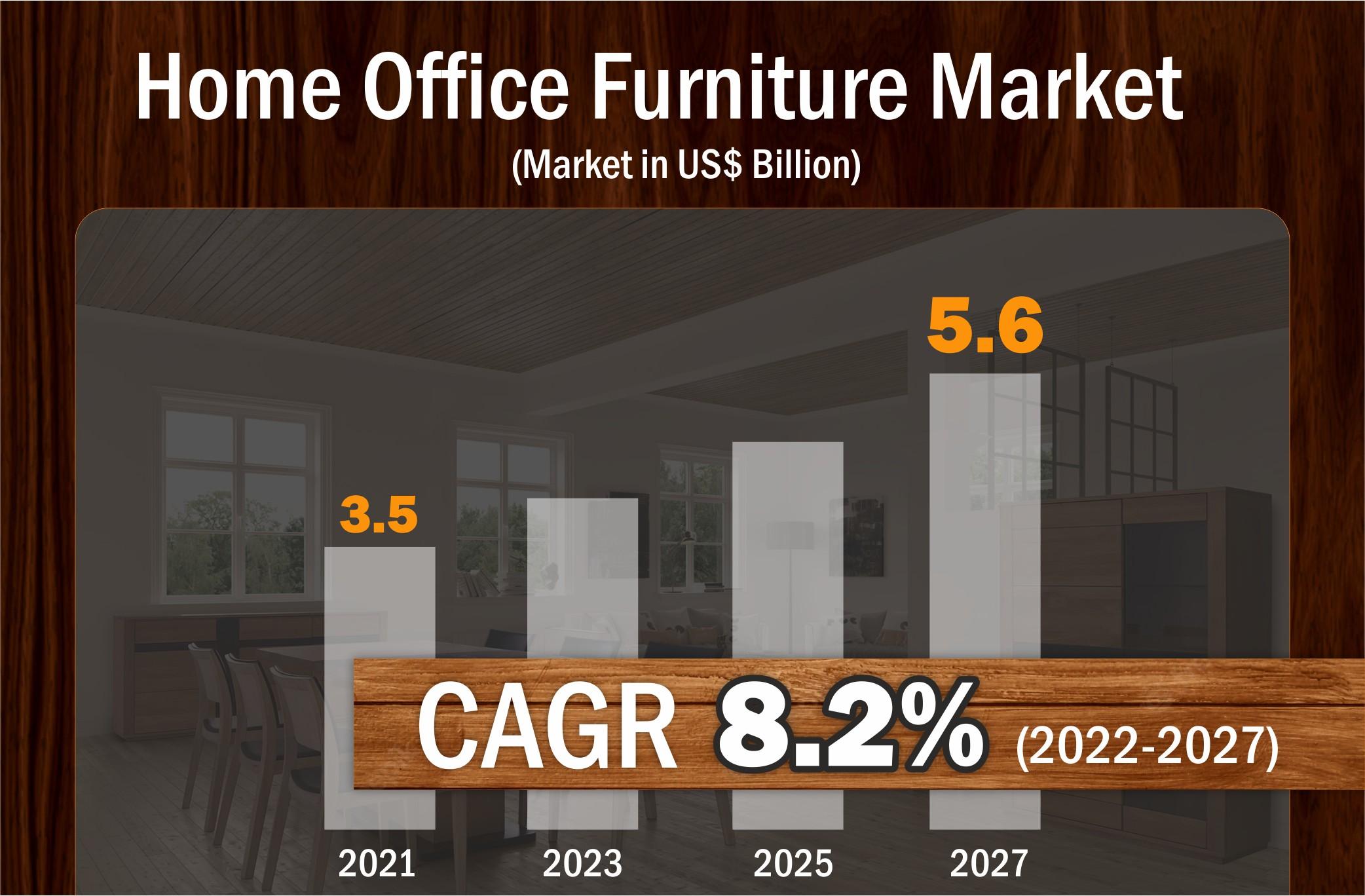The home office furniture market has seen significant growth in recent years, driven largely by the rise of remote and hybrid work models. This shift in work culture has transformed how people set up their workspaces at home, boosting demand for functional, ergonomic, and aesthetically pleasing furniture. This article explores the key dynamics influencing the market and highlights emerging opportunities for industry players.
According to Stratview Research, the home office furniture market was estimated at USD 3.5 billion in 2021 and is likely to grow at a CAGR of 8.2% during 2022-2027 to reach USD 5.6 billion in 2027.
1. Rising Demand Due to Remote Work Trends
The COVID-19 pandemic catalyzed a global shift towards remote work, a trend that shows no signs of reversing. As more companies embrace flexible work policies, employees are investing in home office setups to improve productivity and comfort. This ongoing trend is a primary driver of the home office furniture market, creating a consistent demand for desks, chairs, storage solutions, and other workspace essentials.
2. Growing Focus on Ergonomics and Employee Well-being
With prolonged hours spent working from home, there is an increasing emphasis on ergonomic furniture that supports better posture, reduces fatigue, and enhances overall well-being. Adjustable desks, ergonomic chairs, and monitor stands have become popular as consumers prioritize health and comfort in their home offices. This focus on ergonomics not only meets consumer demand but also opens avenues for innovation in product design.
3. E-commerce Boom and Direct-to-Consumer Sales
The rise of e-commerce has significantly impacted the home office furniture market, making it easier for consumers to browse, compare, and purchase products online. Direct-to-consumer brands have particularly benefited from this trend, offering stylish, affordable, and customizable furniture options. This shift towards online shopping has also allowed manufacturers to reach a broader audience, reducing the dependency on traditional brick-and-mortar stores.
4. Sustainability as a Key Market Driver
Sustainability is becoming a crucial factor in consumer purchasing decisions, and the home office furniture market is no exception. Eco-friendly materials, recyclable products, and sustainable manufacturing practices are gaining traction among environmentally conscious consumers. Companies that prioritize sustainability are better positioned to capture this growing market segment, driving long-term brand loyalty and growth.
5. Innovation and Smart Furniture Solutions
The integration of technology into home office furniture presents new opportunities for growth. Smart desks with built-in charging stations, cable management systems, and adjustable features cater to the tech-savvy consumer looking for convenience and functionality. The blending of technology with traditional furniture design is creating a niche market for innovative products that enhance the work-from-home experience.
Conclusion
The home office furniture market is evolving rapidly, driven by changing work habits, a focus on ergonomics, and the rise of e-commerce. Emerging opportunities in sustainability and smart furniture are paving the way for future growth. As consumers continue to redefine their home workspaces, the market is poised for sustained expansion, offering lucrative prospects for manufacturers, designers, and retailers alike.


